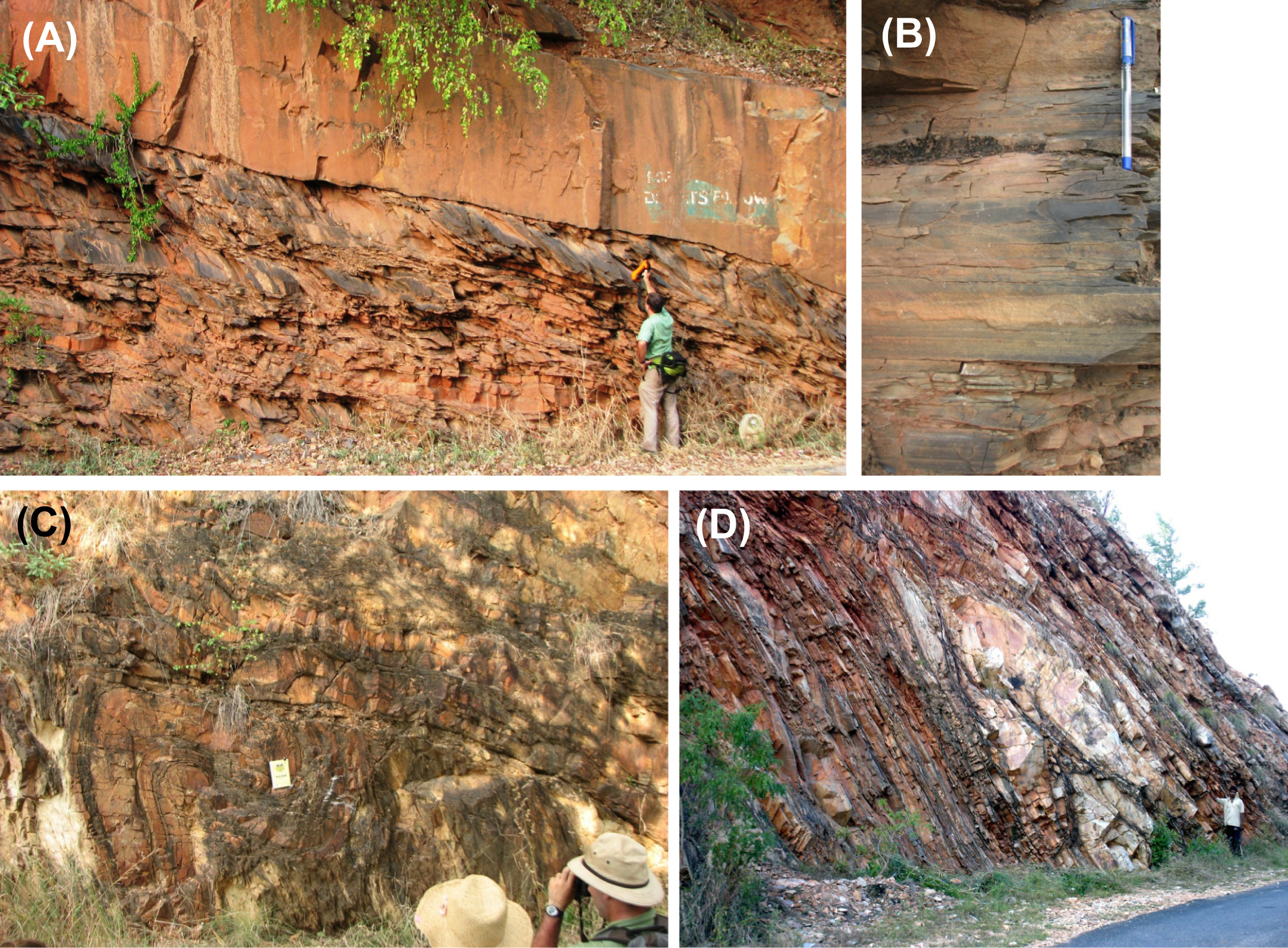Cumbum Fm
Type Locality and Naming
Upper formation of Nallamalai Gr
Synomym: Pullampet Shale Fm (equivalent in western part of Nallamalai Fold Belt)
Lithology and Thickness
Shale, dolomitic limestone, quartzite. The Cumbum Formation consists of gray-green slate with thin, fine grained sandstone and local dolomitic interbeds (Fig. – image B). The slate (shale siltstone) is topped by medium grained quartzite with plane parallel laminations and large planar tabular cross-strata with tidal bundles. South and west of the Iswarakuppam dome, thick shale siltstone (slates of the Cumbum Formation) show repeated cycles of massive to normally graded siltstone, followed upwards by plane-parallel units and, finally, plane-laminated shale.
[Figure: Field photographs showing lithology and deformation features of the Nallamalai Group. (A) Bairenkonda Quartzite Fm (upper part): Thin bedded, intercalated sandstone-shale alternating with thicker sandstone. (B) Cumbum Fm: Plane laminated shale. (C) West vergent folds and faults truncating fold limbs, west margin of Nallamalai fold belt (NFB). (D) Tight folds and axial plane cleavage in intercalated phylliteequartzite, eastern margin of NFB. (from Saha et al., 2016)]
Relationships and Distribution
Lower contact
Overlies the Bairenkonda Quartzite Fm
Upper contact
Unconformity (tectonic contact), overlain by Srisailam Quartzite Fm (ca. 1450 Ma)
Regional extent
GeoJSON
Fossils
Age
Depositional setting
Inner to outer shelf in Middle part; Sub-tidal bar to peritidal in Upper part. The shale-siltstone dominant middle part has been interpreted as a turbidite succession, although the quartzite-dominant upper Cumbum Formation represents subtidal bars to peritidal deposits
Additional Information
